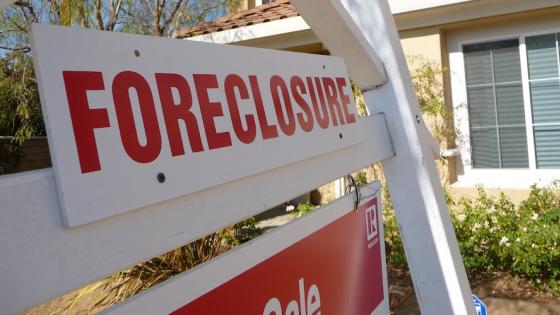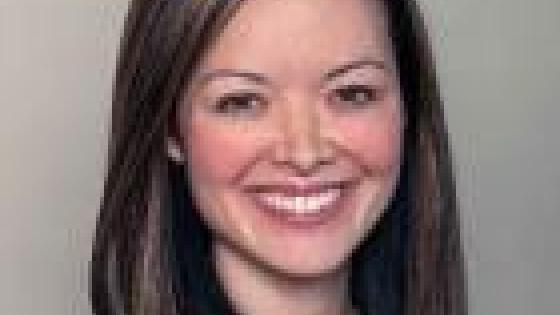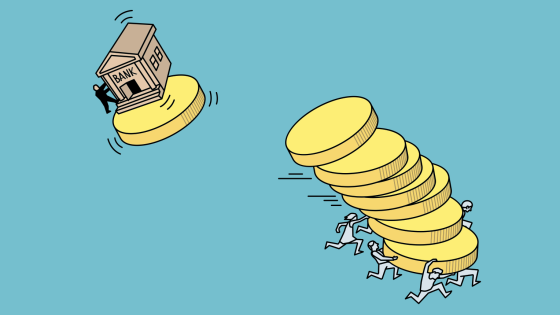A central feature of the foreclosure crisis in US cities is that the effects were concentrated in specific neighbourhoods. Many studies (Bayer et al. 2016, Ghent et al. 2014, Geradi and Willen 2009, Fisher et al. 2010, Edminston 2009) have documented especially high foreclosure rates in disadvantaged neighbourhoods. The high levels of dispersion across neighbourhoods in foreclosure rates have suggested to many that foreclosures may have spillover effects on the local housing market and on nearby homeowners, and several studies have documented a strong correlation between foreclosure rates and declines in housing prices (Immergluck and Smith 2006, Leonard and Murdoch 2009, Rogers and Winter 2009) or increases in the rate of new foreclosures (Goodstein et al. 2001, Bradley at al. 2015). However, places that have more foreclosures initially are likely to have more foreclosures in the future as well, even without neighbourhood spillovers, because households in the same neighbourhood often have similar unobservables and are affected by similar economic circumstances.
Evidence on highly localised spillovers
In order to address this difficult identification problem, many studies have exploited data on foreclosures that contain detailed information on the geographic location of the housing units and on the timing of the foreclosures. The intuition behind this strategy is that thin housing markets and limited information on micro-neighbourhoods makes it difficult for households to systematically sort into specific houses or residential blocks conditional on the broader neighbourhood (Bayer et al. 2008). Therefore, after controlling for the broad neighbourhoods that individuals select, exposure at a specific date to a very nearby foreclosure is likely close to random. Practically, these studies (Schuetz et al. 2008, Harding et al. 2009, Campbell et al. 2011, Anenberg and Kung 2014, Hartley 2014, Gerardi et al. 2015) include high dimensional fixed effects to control for neighbourhood unobservables, and identify the effect of foreclosure by regressing housing sales price on whether a foreclosure recently occurred within a specified distance (typically between 250 feet and one half mile) of the house. The studies also tend to control for neighbourhood trends, and typically find at most modest effects of nearby foreclosures on housing prices. One exception is Lin et al. (2009) who find large housing price effects, but this difference may be because they do not control for neighbourhood trends unlike many of the other studies cited.
A smaller literature investigates whether social networks or other non-price spillovers influence foreclosure rates within neighbourhoods. Guiso et al. (2013) find that individuals who know someone who defaulted on their mortgage are 82% more likely to state their intention to default, but of course individuals who know each other likely share unobservables that could contribute to foreclosure. Therefore, following the literature on spillover effects on housing prices, Towe and Lawley (2013) identify the causal effect on foreclosure of earlier foreclosures among an individual’s 13 closest neighbours again by conditioning on the broader neighbourhood, and find for their Maryland sample that one additional unit in foreclosure raises the likelihood of nearby foreclosures by 18%. Munroe and Wilse-Samson (2013) exploit the random assignment of foreclosures in Chicago to Chancery-court judges. These judges differ in their likelihood of dismissing the foreclosure claims of lenders and, based on these differences, they find that an additional completed foreclosure within one-tenth of a mile raises the likelihood of future foreclosure filings by 10%. Gupta (2016) exploits the contractual terms of adjustable-rate mortgages, whether the rates are linked to the treasury or LIBOR interest rate indices, and the length of the look-back period for determining rate adjustments. These features are strongly predictive of interest rate changes and of future foreclosures, and he finds that having a nearby foreclosure raises the likelihood of future foreclosures over the next two years and within one-tenth of a mile by 1.6%.
Initial evidence of sizeable, aggregate effects of spillovers
However, in spite of the growing evidence of causal effects of foreclosures on very localised housing markets, we do not know whether these localised spillovers and/or neighbourhood spillovers in general contribute substantially to the large conditional correlations between overall neighbourhood foreclosure rates and the likelihood of future foreclosures in the same neighbourhood. The highly localised effects of foreclosures documented in the studies above could lead to multiplier effects, as each foreclosure leads to new foreclosures that create their own spillover effects.
In a recent paper (Huang et al. 2018), we address this question by using the timing of when homes were purchased in a neighbourhood in the run up to the crisis to predict the share of housing units purchased prior to the crisis that are in negative equity in each quarter during the crisis. We exploit the fact that homes purchased near the onset of the crisis were purchased at a higher base level of prices, and so had further to fall relative to their initial purchase price than homes purchased earlier. Our measure of neighbourhood negative equity levels does not depend upon either neighbourhood measures of housing price or the original loan-to-value ratios of the initial mortgages, and so is only identified by these timing differences.
We estimate our model using data on housing transactions and Notice of Trustee Sales (NOT) recordings (i.e. foreclosure filings) in San Diego County. Our measure of neighbourhood negative equity is strongly predictive of the stock of NOT recordings, and we demonstrate that the timing of home purchases within each neighbourhood/census tract are uncorrelated with the attributes of those mortgages. We find that a one standard deviation increase in the number of units having received a NOT in a census tract is associated with a 64% increase in the likelihood of a housing unit receiving a NOT recording in the current quarter over a base rate of NOT recordings of 0.7% each quarter. Further, we observe that the dispersion across census tracts in new NOT recordings almost triples during the first two years of the crisis from an initial standard deviation across tracts of 0.4 to 1.1%, and based on our estimates the neighbourhood spillover effects can explain up to 67% of this increase. Finally, housing prices stabilised and began to increase during the last year of our data and the rate of new NOT recordings fell, but the stock of past recordings increased and their estimates suggest that the decline in new NOT recordings would have been more than twice as large without neighbourhood spillovers.
In summary, a strong body of evidence now exists that foreclosures depress the sales price of very nearby homes, and growing evidence suggests that foreclosures can contribute directly to future nearby foreclosures beyond the effect on local housing prices. Our recent study goes further to document much broader and larger overall neighbourhood effects of foreclosures that may be attributable to multiplier effects arising from the very localised effects documented in earlier research. These aggregate effects can explain much of the growing dispersion in foreclosure rates across neighbourhoods during the crisis, and may have contributed to elevated foreclosure rates as the housing market stabilised and prices recovered.
References
Anenberg, E, and E Kung E (2014), “Estimates of the size and source of price declines due to nearby foreclosures”, American Economic Review, 104 (8), 2527-2551.
Bayer, P, F Ferreira, and S L Ross (2016), “The Vulnerability of Minority Homeowners in the Housing Boom and Bust”, American Economic Journal: Economic Policy, 8, 1-27.
Bayer, P, S L Ross, and G Topa (2008), “Place of work and place of residence: Informal hiring networks and labor market outcomes”, Journal of Political Economy, 116, 1150-1196.
Bradley, M G, A C Cutts, and W Liu (2015), “Strategic mortgage default: the effect of neighborhood factors”, Real Estate Economics 43 (2), 271-299.
Campbell, J Y, S Giglio, and P Pathak (2011), “Forced sales and house prices”, American Economic Review, 101 (5), 2108-2131.
Chan S, A Haughwout and J Tracy (2015), “How Mortgage Finance Affects the Urban Landscape”, in G Duranton, V Henderson and W Strange (eds.), Handbook of Urban and Regional Economics Vol 5A, 987-1045, Amsterdam: North Holland.
Edmiston, K (2009), “Characteristics of High Foreclosure Neighborhoods in the Tenth District”, Economic Review 94 (2), 51-75.
Fisher L, L Lambie-Hanson, and P Willen (2010), “A Profile of the Mortgage Crisis in a Low-and-Moderate-Income Community”, Boston Federal Reserve Public Policy Discussion Papers No 10-6
Gerardi, K, E Rosenblatt, P S Willen, and V W Yao (2015), “Foreclosure externalities: some new evidence”, Journal of Urban Economics, 87, 42-56.
Gerardi K, and P Willen (2009), “Subprime Mortgages, Foreclosures, and Urban Neighborhoods”, The Berkeley Electronic Journal of Economic Analysis and Policy, 9 (3).
Ghent, A, R Hernández-Murillo and M Owyang (2014), “Differences in Subprime Loan Pricing across Races and Neighborhoods”, Regional Science and Urban Economics, 48, 199-215.
Goodstein, R M, P Hanouna, C D Ramirez, and C W Stahel (2011), “Are foreclosures contagious?”, FDIC Center for Financial Research Working Paper, No 2011-4.
Gupta, A (2018), “Foreclosure contagion and the neighborhood spillover effects of mortgage defaults”, Journal of Finance, forthcoming.
Huang, W, A Nelson, and S L Ross (2018), “Foreclosure Spillovers within broad Neighborhoods”, HECO Working Paper 2018-096 .
Harding, J P, E Rosenblatt, and V W Yao (2009), “The contagion effect of foreclosed properties”, Journal of Urban Economics 66 (3), 164-178.
Hartley, D (2014), “The impact of foreclosures on nearby housing prices: supply or dis-amenity?”, Regional Science and Urban Economics 49, 108-117.
Immergluck, D, and G Smith (2006), “There goes the neighborhood: the effect of single-family mortgage foreclosures on property values”, Housing Policy Debate 17 (1), 57-79.
Leonard, T, and J Murdoch (2009), “The neighborhood effects of foreclosure”, Journal of Geographical Systems 11 (4), 317-332.
Munroe, D J, and L Wilse-Samson (2013), “Foreclosure contagion: measurement and mechanisms”, Working Paper.
Rogers, W H, and W Winter (2009), “The impact of foreclosures on neighboring housing sales”, Journal of Real Estate Research 31 (4), 455-479.
Schuetz, J, B Been, and I G Gould (2008), “Neighborhood effects of concentrated mortgage foreclosures”, Journal of Housing Economics 17 (4), 306-319.
Towe, C, and C Lawley (2013), “The contagion effect of neighboring foreclosures”, American Economic Journal: Economic Policy 5 (2), 313-335.







